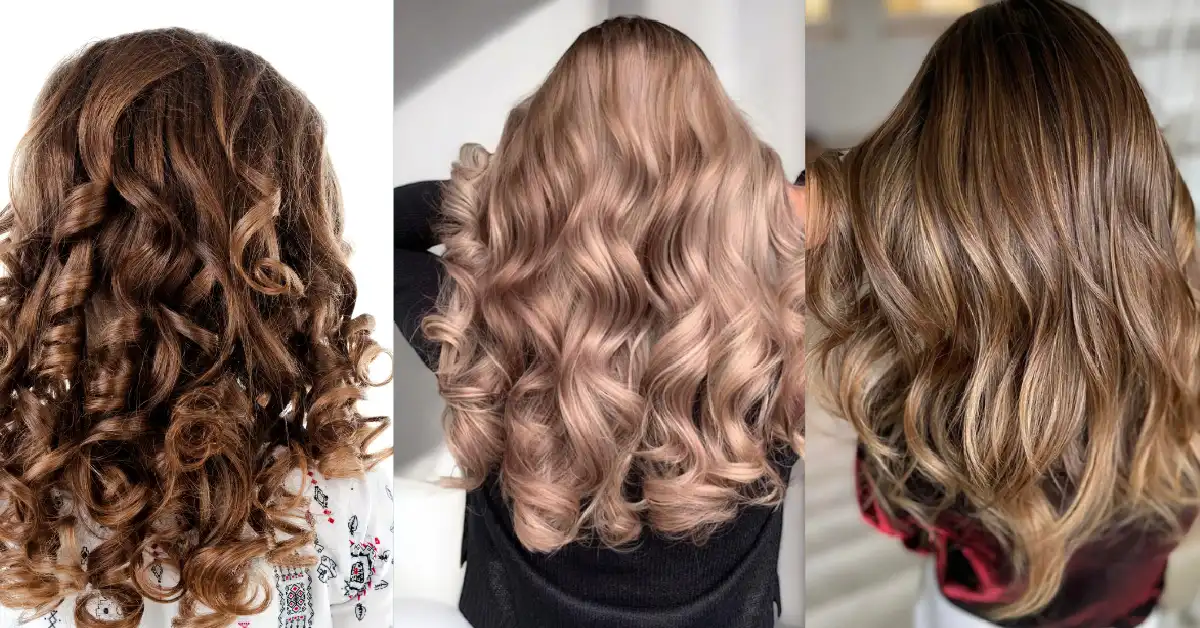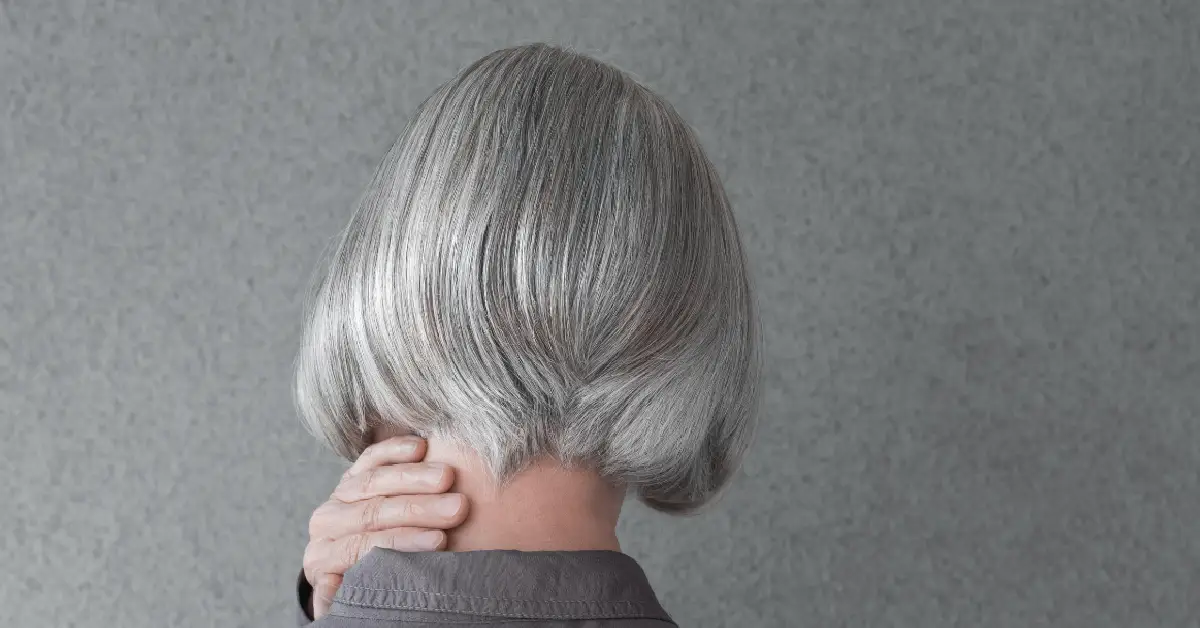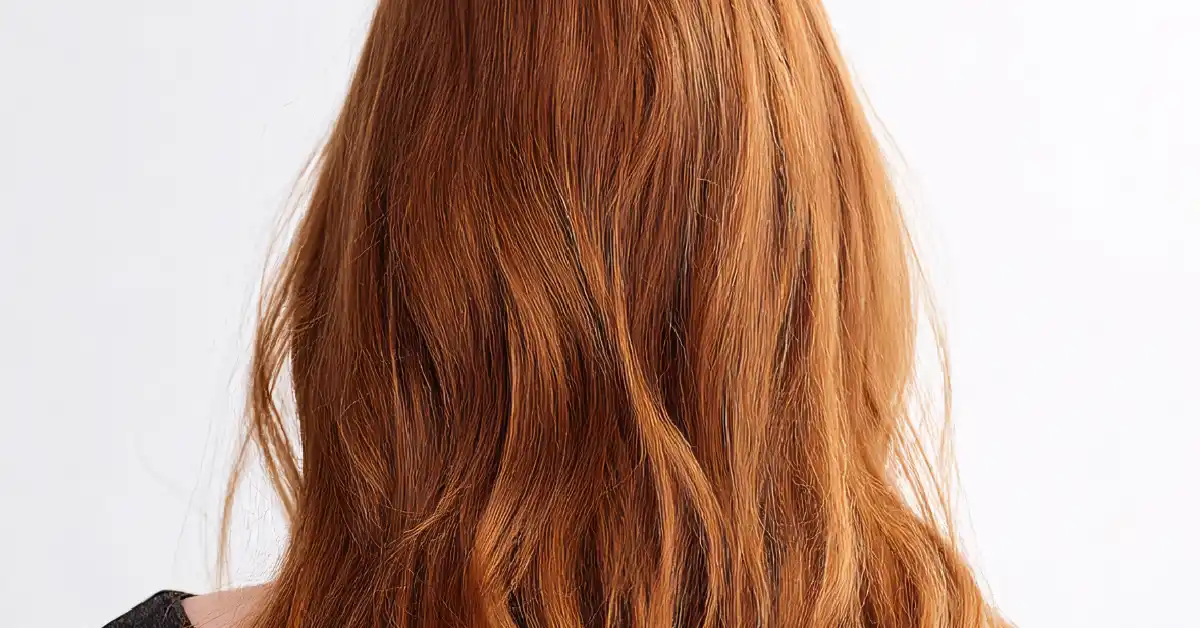Beauty
Hair Curl Chart: Your Complete Guide to Understanding Curl Types

Introduction
What is a hair curl chart, and what does it offer? A hair curl chart is a classification system that helps identify different hair textures, from straight to tightly coiled curls. It provides a visual and descriptive guide to understanding your unique curl pattern, making it easier to choose the right hair care routine, products, and styling techniques. By using a hair curl chart, individuals can confidently embrace their natural texture and care for it in the best possible way. Whether you have loose waves, defined curls, or tight coils, the chart serves as a roadmap for healthy and stylish hair care.
1. Background: How the Hair Curl Chart Evolved
The hair curl chart became popular in the beauty industry as a way to standardize hair care advice. Originally developed by hairstylists and later refined by brands, the chart categorizes hair into four main types (1 to 4), with subcategories (A, B, C) that further define curl tightness and density. Today, it is widely used by professionals, beauty influencers, and consumers to determine which products and techniques best suit their natural hair.
2. Overview of Hair Curl Types (Quick Reference)
| Hair Type | Subtypes | Description |
|---|---|---|
| Type 1 | 1A, 1B, 1C | Straight hair with minimal to no wave |
| Type 2 | 2A, 2B, 2C | Wavy hair ranging from loose “S” shapes to defined waves |
| Type 3 | 3A, 3B, 3C | Curly hair with spirals, from loose curls to tight corkscrews |
| Type 4 | 4A, 4B, 4C | Coily/kinky hair, ranging from tight coils to zig-zag curls |
3. Detailed Explanation of Each Curl Type
Type 1: Straight Hair
-
1A: Fine, thin, very straight with no volume.
-
1B: Straight with more body, slight bends at the ends.
-
1C: Thick, coarse, resistant to styling, but naturally straight.
Type 2: Wavy Hair
-
2A: Loose, fine waves with little frizz.
-
2B: Defined “S” waves, slightly frizzy, moderate volume.
-
2C: Thick, coarse waves with high frizz potential and stronger definition.
Type 3: Curly Hair
-
3A: Loose, large curls with shine.
-
3B: Medium, springy ringlets with more volume.
-
3C: Tight corkscrews, lots of density, prone to shrinkage.
Type 4: Coily/Kinky Hair
-
4A: Soft, springy coils with a visible curl pattern.
-
4B: Z-shaped curls with less defined coils, more shrinkage.
-
4C: Very tight, fragile curls, almost no defined pattern, maximum shrinkage.
4. Standard vs. Alternative Hair Classification Systems
While the curl chart is the most widely used system, other methods also exist. Some categorize hair based on porosity (how well it absorbs moisture), density (number of strands per square inch), and thickness (strand width). Together, these give a more complete picture of hair health and care needs.
5. Benefits of Using a Hair Curl Chart
-
Helps identify the best hair products (shampoos, conditioners, styling gels).
-
Provides guidance for protective hairstyles.
-
Makes it easier to follow tutorials designed for your curl type.
-
Reduces trial-and-error in hair care routines.
6. Hair Care Tips for Each Curl Type
-
Type 1: Use lightweight shampoos to avoid oil buildup.
-
Type 2: Enhance waves with mousse or sea salt sprays.
-
Type 3: Apply curl creams and diffusers for definition.
-
Type 4: Use heavy creams, oils, and protective styles for moisture retention.
7. Common Misconceptions About Curl Types
-
Myth: All curly hair is the same.
-
Truth: Each curl type has unique needs.
-
Myth: Straight hair doesn’t need care.
-
Truth: Straight hair still requires moisture and protection.
8. Products That Work Best for Different Curl Types
-
Type 1: Volumizing shampoos, dry shampoos.
-
Type 2: Lightweight gels, curl enhancers.
-
Type 3: Curl creams, hydrating masks.
-
Type 4: Shea butter, oils, leave-in conditioners.
9. Pros and Cons of Relying on a Hair Curl Chart
Pros:
-
Easy way to identify hair needs.
-
Widely recognized in the beauty industry.
-
Helps in building personalized routines.
Cons:
-
Doesn’t consider porosity, density, or overall health.
-
May oversimplify diverse hair textures.
10. Final Conclusion: Is the Hair Curl Chart Worth Following?
Yes, the hair curl chart is worth following as a starting point. It provides a clear and structured way to understand your hair, choose products, and learn styling methods. However, it should be used alongside other factors like porosity and density for best results.
11. FAQs
Q1: What is the purpose of a hair curl chart?
A: To help identify hair types and suggest proper care methods.
Q2: Can hair type change over time?
A: Yes, due to hormonal changes, aging, or chemical treatments.
Q3: Do I need specific products for my curl type?
A: Yes, tailored products enhance natural texture and reduce damage.
Q4: Is Type 4 hair more fragile than other types?
A: Yes, because of tight curls and shrinkage, it requires extra care.
Q5: Can I have more than one curl type?
A: Absolutely, many people have mixed textures on different parts of their head.

Beauty
Over 60 Middle Aged Short Haircuts for Women That Redefine Style and Confidence

Introduction
As women embrace their 50s and 60s, style becomes a blend of confidence, individuality, and grace. One of the most transformative elements of this stage of life is the hairstyle. Over 60 middle aged short haircuts for women are not just about convenience—they reflect elegance, personality, and timeless beauty. From chic pixies to layered bobs, short hairstyles empower women to showcase their confidence while maintaining a youthful, modern look. In this article, we’ll explore the best haircut ideas, styling tips, and comparisons to help you find the perfect match for your lifestyle.
1. Why Short Hair Works Best for Women Over 60
Short haircuts have remained a timeless choice for women in their 60s because they balance elegance with practicality. As hair texture changes with age, shorter styles can add volume, reduce the hassle of daily maintenance, and highlight facial features beautifully. These cuts radiate confidence and provide a sense of empowerment, making them perfect for women who want to look chic with minimal effort.
2. Key Features of Middle Aged Short Haircuts
When choosing over 60 middle aged short haircuts for women, it’s important to focus on features that enhance natural beauty:
-
Volume and Layers: Help thin hair appear fuller.
-
Face-Framing Cuts: Highlight cheekbones and jawline.
-
Low Maintenance: Easy styling for everyday wear.
-
Versatility: Adaptable for casual and formal looks.
-
Timeless Appeal: Classic yet modern to suit all occasions.
More Article Here
3. Top 10 Classic Styles for Mature Elegance
-
Layered Bob – Adds bounce and texture.
-
Soft Pixie Cut – Bold yet feminine.
-
Feathered Crop – Soft layers create movement.
-
Rounded Short Bob – Enhances facial softness.
-
Shaggy Layers – Effortless and trendy.
-
Side-Swept Bob – Chic and age-defying.
-
Classic French Bob – Timeless sophistication.
-
Wavy Crop – Perfect for natural waves.
-
Choppy Bob with Bangs – Adds youthful energy.
-
Short Curly Bob – Enhances natural curls.
4. Modern & Trendy Short Cuts for a Fresh Look
While classics never fade, modern variations are making waves. Textured pixies with undercuts, asymmetrical bobs, and edgy spiky crops are excellent choices for women seeking bold transformations. These styles not only redefine beauty standards but also embrace individuality, proving that age is just a number.
5. Low-Maintenance Short Hair Options
Not every woman enjoys spending hours styling her hair. Luckily, many over 60 middle aged short haircuts for women are naturally low-maintenance:
-
Wash-and-Go Pixie
-
Textured Shag
-
Simple Boy Cut
-
Tapered Bob
These cuts require little styling while still looking polished.
6. Styling Tips to Enhance Your Short Hair
Even the best haircut shines brighter with the right styling approach:
-
Use light volumizing mousse for fullness.
-
Incorporate soft curls with a curling wand for occasions.
-
Add accessories like clips and headbands for extra charm.
-
Maintain regular trims to keep the shape defined.
-
Experiment with side or middle parts to refresh the look.
7. Hair Color Trends That Complement Short Cuts
The right hair color can elevate your look dramatically. For women over 60, lighter shades and highlights often enhance the face and give a youthful glow. Some popular choices include:
-
Silver Highlights – Celebrate natural grays stylishly.
-
Warm Blondes – Add softness and light.
-
Rich Brunettes – Provide depth and elegance.
-
Soft Pastels – Bold yet trendy for adventurous women.
8. Comparison Chart: Short Haircut Styles
| Haircut Style | Best For | Maintenance Level | Key Benefit |
|---|---|---|---|
| Layered Bob | Thin hair | Medium | Adds volume and bounce |
| Pixie Cut | Round faces | Low | Youthful and bold |
| Shaggy Layers | Thick hair | Low | Trendy with minimal effort |
| Side-Swept Bob | Oval faces | Medium | Chic and face-framing |
| Curly Bob | Natural curls | Medium | Defines curls beautifully |
| Tapered Cut | All face shapes | Low | Sleek and elegant |
| Choppy Bob w/ Bangs | Square faces | Medium | Adds fun, youthful edge |
9. FAQs About Short Haircuts for Women Over 60
Q1: Do short haircuts make women over 60 look younger?
Yes, short hair often frames the face and highlights features, creating a youthful appearance.
Q2: How often should I trim short hair at this age?
Every 4–6 weeks helps maintain shape and freshness.
Q3: Which face shapes suit short haircuts best?
Short hair suits all shapes, with slight modifications like layers or bangs for balance.
Q4: Can thinning hair benefit from short cuts?
Absolutely. Layers and texture in short cuts make thin hair look fuller.
Q5: What’s the best low-maintenance style for daily life?
A classic pixie or tapered cut is ideal for women who prefer minimal styling.
Conclusion
Over 60 middle aged short haircuts for women celebrate style, practicality, and self-expression. From timeless bobs to chic pixies, these hairstyles reflect a perfect blend of modern trends and classic beauty. Whether you want low-maintenance ease or a bold transformation, short hair provides endless possibilities to embrace your confidence and elegance at any age.
Beauty
Auburn Brown Hair: The Perfect Shade for a Stylish Transformation

Introduction
Auburn brown hair is one of the most captivating hair colors that blends the warmth of red with the richness of brown. It offers a versatile look that works well with different skin tones, making it a top choice for those looking to refresh their style without going too bold or too subtle. From natural hues to bold, fiery tones, this shade provides endless opportunities for customization. Whether you want a soft sun-kissed glow or a striking, head-turning color, auburn brown hair can completely transform your look while staying timeless and elegant.
1. What is Auburn Brown Hair?
Auburn brown hair is a rich combination of warm red tones with deep brown undertones. Unlike pure red or dark brunette shades, it balances vibrancy and subtlety, creating a multidimensional look. The color can range from light coppery brown to deep mahogany, offering flexibility for different preferences.
2. Why Auburn Brown Hair is So Popular
This shade is trending because it adds natural warmth and dimension to hair. Many choose it as it flatters nearly all skin tones, enhances natural glow, and works across various hair textures. It also transitions beautifully under different lighting, making it eye-catching yet versatile.
More Article Here
3. Who Suits Auburn Brown Hair Best?
-
Fair skin tones → Soft auburn-brown creates a gentle contrast.
-
Medium skin tones → Golden auburn highlights enhance warmth.
-
Deep skin tones → Rich mahogany-auburn blends seamlessly and enhances radiance.
Eye color also matters. Auburn brown hair looks stunning with green, hazel, or blue eyes as it makes them pop.
4. Different Shades of Auburn Brown Hair
-
Light Auburn Brown – Soft, natural, sun-kissed glow.
-
Dark Auburn Brown – Deep and elegant with red undertones.
-
Copper Auburn Brown – Bright, fiery, and playful.
-
Mahogany Auburn Brown – Bold with burgundy tones.
-
Golden Auburn Brown – Warm, natural radiance.
5. Auburn Brown Hair vs. Other Popular Shades
| Hair Shade | Undertones | Best For Skin Tones | Vibe/Look | Maintenance Level |
|---|---|---|---|---|
| Auburn Brown Hair | Red + Brown | Universal (fair to deep) | Warm & radiant | Medium |
| Chestnut Brown | Neutral Brown | Medium to light | Classic & subtle | Low |
| Burgundy Hair | Purple + Red | Medium to dark | Bold & dramatic | High |
| Caramel Highlights | Golden Brown | Medium to warm | Bright & youthful | Medium |
| Dark Brown Hair | Cool/Neutral | All tones | Sleek & natural | Low |
6. Styling Tips for Auburn Brown Hair
-
Add soft curls to highlight warm undertones.
-
Go for face-framing highlights to brighten your features.
-
Experiment with braids or updos to showcase multidimensional tones.
-
Pair with warm-toned outfits for a harmonious look.
7. How to Maintain Auburn Brown Hair
-
Use sulfate-free shampoo to prevent fading.
-
Apply color-protecting conditioners to maintain shine.
-
Limit sun exposure or use UV-protection sprays.
-
Schedule regular touch-ups every 6–8 weeks.
8. Best Hairstyles That Complement Auburn Brown Hair
-
Beach waves for a relaxed, modern style.
-
Layered cuts to emphasize depth.
-
Bob cuts for a chic, bold statement.
-
Long straight styles for elegance.
9. Seasonal Trends: Auburn Brown Hair All Year Round
-
Spring: Lighter auburn shades with golden highlights.
-
Summer: Copper-infused auburn for vibrancy.
-
Autumn: Rich mahogany auburn for seasonal warmth.
-
Winter: Dark auburn brown for sleek sophistication.
10. Expert Tips for Choosing the Right Shade
-
Match undertones with your skin (warm vs. cool).
-
Consider your eye color for maximum enhancement.
-
Choose between permanent, semi-permanent, or highlights depending on your comfort with maintenance.
11. Common Mistakes to Avoid with Auburn Brown Hair
-
Over-washing hair (causes faster fading).
-
Ignoring professional advice for first-time coloring.
-
Using harsh products not designed for colored hair.
-
Not considering undertones before choosing a shade.
12. FAQs
Q1: Does auburn brown hair fade quickly?
Yes, red pigments tend to fade faster, but proper care can extend its vibrancy.
Q2: Can I get auburn brown hair without bleaching?
If your natural hair is light to medium brown, you can achieve it without bleach. Darker shades may need lightening.
Q3: Is auburn brown hair professional for workplaces?
Absolutely. It’s stylish yet natural, making it suitable for formal settings.
Q4: What makeup works best with auburn brown hair?
Warm eyeshadows, peachy blush, and nude or berry lip shades complement it beautifully.
Q5: Can I maintain auburn brown hair at home?
Yes, with color-safe products and regular touch-ups, you can keep the shade vibrant.
Conclusion
Auburn brown hair is more than just a color trend—it’s a timeless choice that enhances beauty, warmth, and individuality. Whether you go for light, golden tones or deep, mahogany hues, this shade suits all skin tones and styles. With the right care, styling, and shade selection, auburn brown hair can be your go-to transformation for a confident, radiant look all year round.
-

 Must Read5 months ago
Must Read5 months agoThe Truth Behind the Direct Fairways Lawsuit: What You Need to Know
-

 Business5 months ago
Business5 months agoTop Chartered Accountants Benefits: Guide, Tips, FAQs & More
-

 Tech5 months ago
Tech5 months agoblogsternation .com: Complete Beginner’s Guide, Benefits, and FAQs
-

 Tech3 months ago
Tech3 months agoHow to Upgrade Graphics Driver: Boost Speed, Fix Issues & Enhance Gaming
-

 Sports5 months ago
Sports5 months agoHow Many Quarters in Football? A Complete Guide to Game Structure and Timing
-

 Education5 months ago
Education5 months agoOxford Acceptance Rate: What It Means, Why It Matters, and How to Beat It
-

 Business5 months ago
Business5 months agoUnlocking the Truth About gomyfinance.com Credit Score
-

 Must Read5 months ago
Must Read5 months agoEscalade Must Have Accessories for the Ultimate Cadillac Experience


















